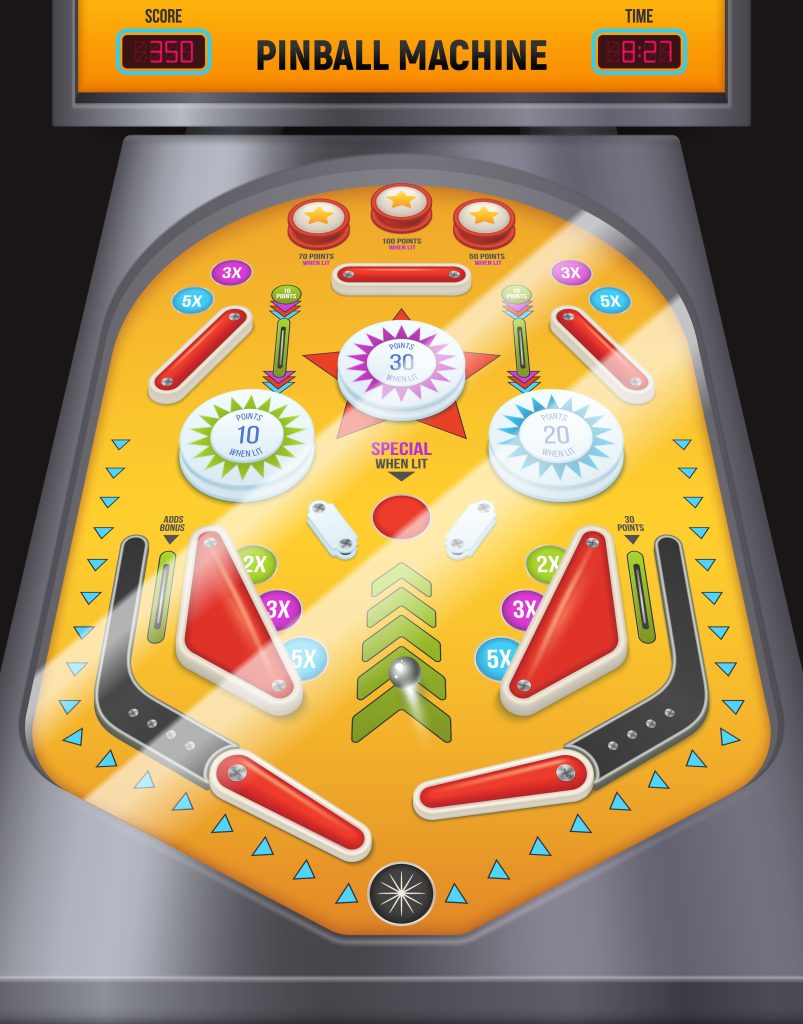Pinball machines have been a popular form of entertainment for decades, providing players with hours of fun and excitement. But what exactly is a pinball machine? In this article, we’ll explore the history and components of pinball machines and explain how they work.

The History of Pinball Machines
The origins of pinball can be traced back to the 18th century with the game Bagatelle. Over the years, the game evolved, and the first coin-operated pinball machine was introduced in the 1930s. Since then, pinball machines have undergone numerous improvements, including the addition of flippers in the 1940s and the transition to electronic components in the 1970s.
Components of a Pinball Machine
A pinball machine consists of various components that work together to create an engaging gaming experience:
- Playfield The playfield is the main area where the ball moves and interacts with various elements. It’s typically decorated with artwork and features ramps, targets, and obstacles.
- Flippers Flippers are the player’s primary method of controlling the ball. Located at the bottom of the playfield, they’re used to propel the ball back up the playfield to hit targets.
- Bumpers and Targets Bumpers and targets are scattered throughout the playfield and serve as the primary way to score points. They can include pop bumpers, drop targets, and spinning targets, each with its unique function and scoring potential.
- Plunger and Ball The plunger is used to launch the ball into the playfield at the beginning of each turn. The ball, usually made of metal, is the main object the player interacts with during gameplay.
How Pinball Machines Work
Players begin by launching the ball into the playfield using the plunger. The objective is to keep the ball in play for as long as possible, using the flippers to hit targets and score points. Once the ball falls out of play, the player loses a “life” or “ball”. The game typically ends after a certain number of balls have been played.
Different Types of Pinball Machines
Over the years, pinball machines have been created with various themes, designs, and gameplay elements. Some popular types include:
- Classic electromechanical machines: These machines feature mechanical components and relays, offering a more nostalgic gaming experience.
- Solid-state machines: Introduced in the 1970s, these machines replaced mechanical components with electronic circuitry and microprocessors, allowing for more complex gameplay.
- Modern machines: Today’s pinball machines often feature advanced technology, such as LCD screens and interactive toys, to create a more immersive experience.
The Resurgence of Pinball While pinball machines saw a decline in popularity during the late 20th century, they have experienced a resurgence in recent years. This renewed interest can be attributed to nostalgia, the increasing popularity of retro gaming, and the unique tactile experience that pinball machines offer.
Conclusion
In conclusion, pinball machines are an iconic form of entertainment that has captivated players for generations. With their rich history, unique gameplay elements, and various types, it’s no wonder they continue to be a beloved fixture

Leave a Reply